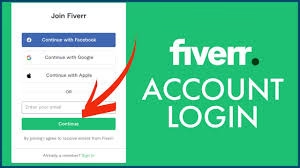Google Rank When you search for something on Google, how often do you go beyond the first page? Chances are, rarely. That’s why ranking high on Google is essential for any business, blog, or brand looking to be discovered online. But getting there takes more than just publishing content — it requires a strategy.
This guide covers everything you need to know about Google rankings in 2025 — from algorithm updates to advanced SEO tactics — so you can climb the search ladder and stay there.
2. What Is Google Ranking?
Google ranking refers to the position a web page holds in Google’s search results for a specific keyword or query. For example, if your blog ranks #1 for “best coffee makers,” it means it’s the first result users see when searching that term.
The higher your rank, the more visibility, clicks, and potential revenue your site can generate.
3. How Google’s Algorithm Works
Google uses a complex algorithm with over 200 ranking factors to determine which pages show up for a query. These include relevance, content quality, backlinks, user behavior, mobile-friendliness, and more.
Major Components:
- Crawling: Googlebot scans the web and collects information.
- Indexing: Relevant data is stored in Google’s index.
- Ranking: Pages are ranked based on how well they match the search intent.
In 2025, Google’s algorithm is even more AI-driven, relying on machine learning to understand intent, context, and authority.
4. Key Google Ranking Factors in 2025
While the algorithm constantly evolves, several core factors remain vital:
1. High-Quality Content
- Original, in-depth, and valuable information
- Optimized for E-E-A-T (Experience, Expertise, Authoritativeness, Trust)
- Satisfies user intent (informational, transactional, navigational)
2. Backlinks
- Still a powerful signal of authority
- Quality > Quantity: One link from a high-authority domain is more valuable than dozens of spammy ones
3. User Experience (UX)
- Fast loading times
- Easy navigation
- Mobile optimization
4. Core Web Vitals
- Largest Contentful Paint (LCP)
- First Input Delay (FID)
- Cumulative Layout Shift (CLS)
5. Engagement Metrics
- Click-through rate (CTR)
- Bounce rate
- Time on site
6. Structured Data & Schema Markup
- Helps Google understand content context
- Boosts visibility with rich snippets
5. On-Page SEO Strategies
On-page SEO is all about optimizing the content and structure on your website.
1. Keyword Optimization
- Use tools like Google Keyword Planner, Ahrefs, or SEMrush
- Focus on primary and secondary keywords
- Include keywords in:
- Title tags
- Meta descriptions
- Headings (H1, H2, H3)
- URL slugs
- Image alt texts
2. Internal Linking
- Connect related content
- Spread link equity
- Improve crawlability
3. Content Freshness
- Regularly update outdated content
- Add new insights and media
4. Readability
- Use short paragraphs and bullet points
- Write at an 8th-grade reading level
- Use transition words to guide readers
6. Off-Page SEO Tactics
Off-page SEO includes all external efforts to improve your site’s visibility and credibility.
1. Link Building
- Guest posting on authoritative sites
- Outreach to niche bloggers and webmasters
- Broken link building
- HARO (Help A Reporter Out)
2. Brand Mentions
- Even unlinked mentions can signal authority
3. Social Signals
- Shares, likes, and comments can indirectly impact rankings
4. Google Business Profile
- Essential for local SEO
- Get reviews, update business info, post regularly
7. Technical SEO Essentials
Behind the scenes, your site needs to be technically sound to earn Google’s trust.
1. Site Speed
- Compress images
- Use a CDN (Content Delivery Network)
- Minify CSS, JS, and HTML
2. Mobile Responsiveness
- Design for all devices
- Use responsive layouts
3. XML Sitemap & Robots.txt
- Help Google crawl and index efficiently
4. HTTPS Security
- Secure websites rank better
5. Canonical Tags
- Prevent duplicate content issues
8. Google Ranking Tools You Need
Here are must-have tools to analyze and improve your rankings:
| Tool | Purpose |
|---|---|
| Google Search Console | Monitor performance, fix issues |
| Google Analytics 4 | Track user behavior |
| Ahrefs / SEMrush | Keyword & backlink research |
| Screaming Frog | Technical audits |
| PageSpeed Insights | Measure Core Web Vitals |
| SurferSEO / Frase | Content optimization |
9. Common Myths About Google Rankings
There are many misconceptions about what does and doesn’t affect rankings. Let’s debunk a few:
❌ Myth 1: More content = better rankings
✅ Truth: Quality trumps quantity. Thin content can hurt you.
❌ Myth 2: Meta keywords still matter
✅ Truth: Google hasn’t used them in years.
❌ Myth 3: Paid ads help with organic rankings
✅ Truth: Google Ads have no direct impact on SEO.
❌ Myth 4: Keyword stuffing works
✅ Truth: Over-optimization can trigger penalties.
10. How Long Does It Take to Rank on Google?
It depends on several factors:
- Keyword difficulty
- Domain authority
- Backlink profile
- Content quality
- Competitor activity
On average, it takes 3–6 months to start ranking for low-to-medium competition keywords. For high-competition terms, it could take 12 months or more.
🔑 Consistency and patience are your best allies in SEO.
11. Penalties and Ranking Drops
Google can penalize your site manually or algorithmically for violating its guidelines. Common causes include:
- Buying backlinks
- Keyword stuffing
- Cloaking or hidden content
- Duplicate content
- Poor mobile usability
Use Google Search Console to check for manual actions and resolve them immediately.
Recovery Tips:
- Remove or disavow bad links
- Fix thin or spammy content
- Submit a reconsideration request (for manual penalties)
12. Final Thoughts
Ranking high on Google in 2025 isn’t about gaming the system — it’s about delivering the best possible experience to your users. Focus on quality content, user satisfaction, and technical excellence.
Whether you’re running a blog, eCommerce store, or local business, SEO remains one of the most powerful ways to grow your online presence.
📈 Ready to climb the rankings? Start with what you control — your content and user experience — and build from there.
Would you like this formatted as a blog post with HTML or uploaded as a document? Want a specific niche version (e.g., eCommerce, local business, SaaS)?
4o






